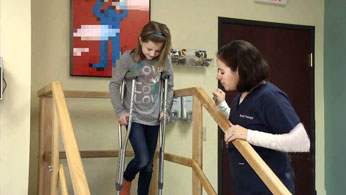The principal aim of this study was to elucidate how physiotherapists work with patients with traumatic brain injury in acute inpatient and later home-based phases of rehabilitation. Another aim was to investigate what assessment, treatment and outcome evaluation methods they use. Further objectives were to find out if there were any methodological differences in the different phases of the rehabilitation, why the methods were chosen, and to which International Classification of Functioning (ICF) components the methods were related. The ICF was used to facilitate comparison between the different methods. A qualitative design with four focus group interviews was used. The data were collected in four different rehabilitation settings with a total of 13 physiotherapists. Semi-structured questions were used. The data were analysed, categorized and related to ICF components. The main categories drawn from the interviews were: the work of the physiotherapist, assessment, treatment and outcome evaluation methods used, reasons for choosing the different methods, and relations to the ICF. The interviewees talked about a complex and difficult working field with persons with traumatic brain injury who had problems in all ICF components. The assessment was largely non-instrumental and consisted of inspection, specification of problems and functional testing. The physiotherapists used existing therapeutic methods as a source of ideas for their individualized treatments. They combined ideas from all the existing methods. All of the physiotherapists considered functional training important. There were no major differences in choice of methods between the rehabilitation phases. The physiotherapists used scientific evidence-based methods when available. In addition, they chose methods appropriate for the patient’s capacity and needs. The instruments mostly used for assessment and outcome evaluation aligned with the ICF components body function and activities/participation. This was also true for the treatment methods. The results indicated that there is a need for new assessment and outcome evaluation methods that are able to capture all aspects of rehabilitation and pay more consideration to quality of life and functional performance.
